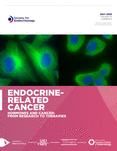The epidermal growth factor receptor family as a central element for cellular signal transduction and diversification.
- N Prenzel,
- O M Fischer,
- S Streit,
- S Hart and
- A Ullrich
Abstract
Homeostasis of multicellular organisms is critically dependent on the correct interpretation of the plethora of signals which cells are exposed to during their lifespan. Various soluble factors regulate the activation state of cellular receptors which are coupled to a complex signal transduction network that ultimately generates signals defining the required biological response. The epidermal growth factor receptor (EGFR) family of receptor tyrosine kinases represents both key regulators of normal cellular development as well as critical players in a variety of pathophysiological phenomena. The aim of this review is to give a broad overview of signal transduction networks that are controlled by the EGFR superfamily of receptors in health and disease and its application for target-selective therapeutic intervention. Since the EGFR and HER2 were recently identified as critical players in the transduction of signals by a variety of cell surface receptors, such as G-protein-coupled receptors and integrins, our special focus is the mechanisms and significance of the interconnectivity between heterologous signalling systems.












